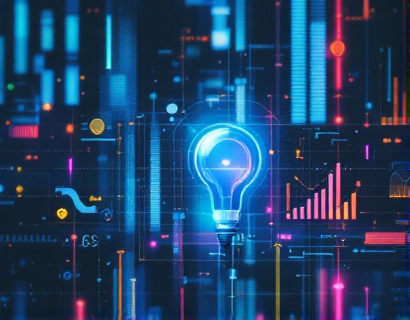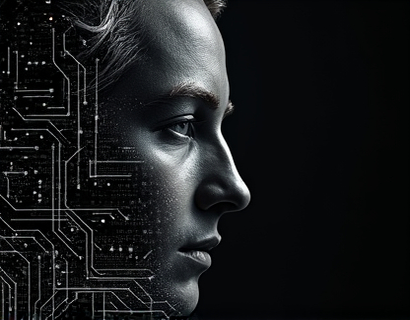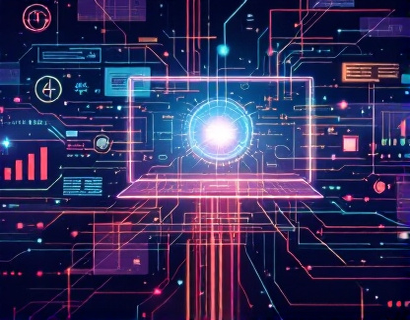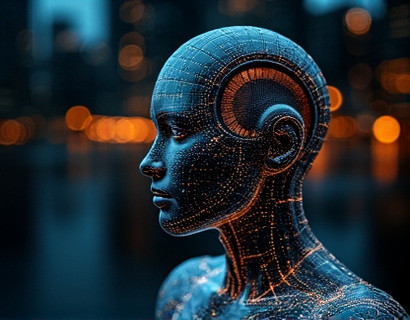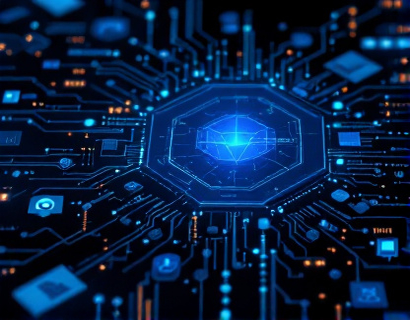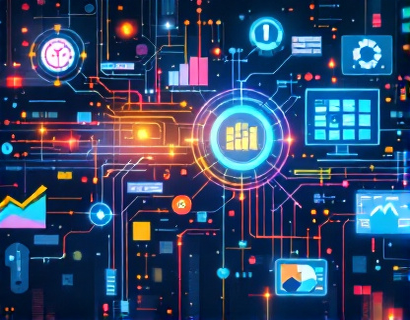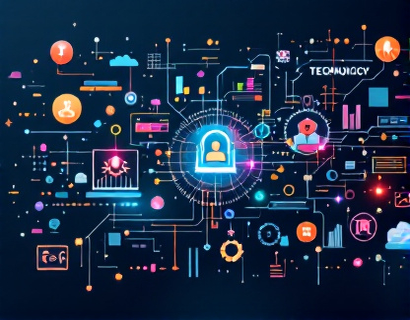Revolutionizing User Experiences: The Synergy of Crypto and AI in the Blockchain Era
The intersection of cryptocurrency and artificial intelligence (AI) is ushering in a new era of digital transformation, redefining how users interact with blockchain technology and enhancing business operations across various sectors. This article explores the profound impact of merging these two cutting-edge technologies, offering insights and a comprehensive guide for tech leaders aiming to navigate and thrive in the blockchain era.
Understanding the Basics: Cryptocurrency and AI
Cryptocurrency, a digital or virtual currency secured by cryptography, operates on a decentralized network known as blockchain. This technology ensures transparency, security, and immutability in transactions. On the other hand, AI refers to the simulation of human intelligence processes by machines, particularly computer systems. These processes include learning (the acquisition of information and rules for using it), reasoning (using rules to reach approximate or definite conclusions), and self-correction.
The convergence of cryptocurrency and AI leverages the strengths of both domains. Cryptocurrency provides a secure and decentralized platform for AI applications, while AI enhances the functionality and user experience of blockchain-based systems. This synergy opens up new possibilities for innovation, efficiency, and user engagement.
Enhancing Security with AI
One of the most significant benefits of integrating AI with cryptocurrency is the enhancement of security measures. AI algorithms can detect and respond to potential threats in real-time, identifying patterns that indicate fraudulent activities or security breaches. Machine learning models trained on vast datasets of transactional data can predict and prevent cyber attacks, ensuring the integrity of the blockchain network.
For instance, AI-driven systems can monitor network activity continuously, flagging unusual patterns that deviate from the norm. These systems can automatically initiate protocols to isolate and neutralize threats, minimizing the risk of financial loss and data compromise. This proactive approach to security is crucial in a landscape where cyber threats are becoming increasingly sophisticated.
Improving User Experience through Personalization
AI's ability to analyze vast amounts of data and derive meaningful insights can significantly enhance the user experience on blockchain platforms. By leveraging machine learning algorithms, these platforms can offer personalized services tailored to individual user preferences and behaviors.
For example, a blockchain-based financial service can use AI to analyze a user's transaction history, spending habits, and investment preferences to provide customized recommendations. This personalization not only improves user satisfaction but also increases engagement and loyalty. Users are more likely to interact with services that understand and cater to their specific needs.
Streamlining Smart Contracts with AI
Smart contracts, self-executing contracts with the terms of the agreement directly written into code, are a cornerstone of blockchain technology. However, the complexity of writing and maintaining these contracts can be a barrier to widespread adoption. AI can streamline this process by automating the creation, review, and execution of smart contracts.
AI tools can analyze legal and business requirements, generate code snippets, and even predict potential issues before deployment. This not only reduces the time and cost associated with smart contract development but also minimizes the risk of errors and vulnerabilities. As a result, businesses can deploy more reliable and efficient smart contracts, fostering greater trust in blockchain applications.
Optimizing Blockchain Scalability with AI
Scalability remains one of the primary challenges for blockchain technology. The need to process a growing number of transactions efficiently without compromising security and decentralization is a critical issue. AI can play a pivotal role in addressing this challenge by optimizing network performance and resource allocation.
AI algorithms can analyze network traffic, identify bottlenecks, and dynamically adjust resources to ensure smooth operation. For instance, machine learning models can predict peak usage times and allocate computational resources accordingly, preventing congestion and ensuring timely transaction processing. This adaptive approach to scalability is essential for the widespread adoption of blockchain technology in various industries.
Enhancing Decentralized Applications (DApps)
Decentralized applications (DApps) are a key application of blockchain technology, offering decentralized and transparent alternatives to traditional web applications. AI can significantly enhance the functionality and user experience of DApps by providing intelligent features and services.
For example, AI-powered chatbots can offer 24/7 customer support within DApps, handling queries and providing assistance in real-time. Predictive analytics can be used to forecast user behavior and preferences, enabling DApps to proactively offer relevant content and services. Additionally, AI can improve the user interface and experience by adapting to individual user interactions, making DApps more intuitive and user-friendly.
Fostering Innovation through AI-Driven Blockchain Ecosystems
The integration of AI with blockchain is not only about enhancing existing applications but also about fostering a new ecosystem of innovation. Developers and businesses can leverage AI tools to create novel blockchain-based solutions that address complex problems across various sectors, from finance and healthcare to supply chain and beyond.
AI-driven platforms can facilitate the development of decentralized marketplaces, enabling peer-to-peer transactions without intermediaries. These platforms can use AI to match supply and demand, optimize pricing, and ensure fair and transparent transactions. The result is a more efficient and inclusive economic system that benefits all participants.
Challenges and Considerations
While the potential benefits of combining cryptocurrency and AI are substantial, there are also challenges and considerations that must be addressed. One of the primary concerns is the regulatory landscape. The rapid evolution of both technologies often outpaces regulatory frameworks, leading to uncertainty and compliance challenges.
Another issue is the computational resource requirements of AI algorithms, which can strain the energy efficiency of blockchain networks. It is crucial to develop AI models that are both powerful and resource-efficient to maintain the sustainability of blockchain systems. Additionally, ensuring data privacy and compliance with regulations such as GDPR is essential when handling sensitive user data.
Navigating the Future: A Guide for Tech Leaders
For tech leaders aiming to harness the power of cryptocurrency and AI, here are some key strategies to consider:
- Stay informed about the latest developments in both blockchain and AI to identify emerging opportunities and trends.
- Invest in research and development to explore innovative applications of AI in blockchain ecosystems.
- Build a skilled team with expertise in both technologies to drive effective integration and innovation.
- Engage with regulatory bodies to ensure compliance and influence the shaping of future policies.
- Focus on user experience and security, leveraging AI to enhance these critical aspects of blockchain applications.
By embracing the synergy between cryptocurrency and AI, tech leaders can position their organizations at the forefront of the blockchain revolution, driving meaningful change and creating value in the digital age.




